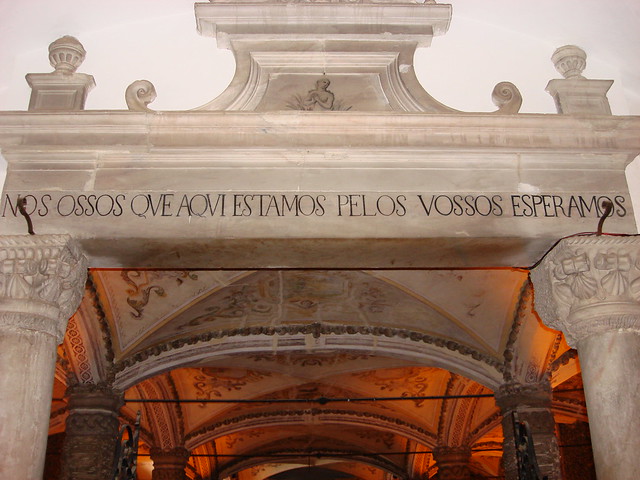Guimaraes Castle is usually described as one of the
mythical territories in Portugal. The castle is a popular tourist destination
because of its historical connection with the inevitable emergence and shaping
of the Portuguese nation. In fact, the Guimaraes Castle is often called the
cradle of the nation because it is located where D. Afonso Henriques was born
and raised and where he planed to battle for the independence of the province
of Portugal in the 12th century. After some time he became the first Portuguese
king.
The history of Guimaraes Castle
began in 968, when the Countess of Galicia - D. Mumadona Dias ordered the
construction of the fortress, whose main mission was to protect the local
population and the existing monastery from raids by the Vikings and Normans from
the shore and Arabs who attacked the South.
In the 11th century the fortress
Guimaraes had a solid defensive structure. At that time, Count Henrique took
control of the local province, which was entrusted by King Alfonso VI of Leon.
The existing tower and wall were reinforced and supplemented, as well as, the
retaining walls were reinforced at the same time with the original fence and
wall.
In 1129 D. Afonso Henriques
proclaimed the independence of Portugal, hence Guimaraes Castle became a major
site of several battles including one against his mother, who was on the side
of opponents. Even though, internally wanted to see an independent Portugal she
was against independence.
With the advent of artillery, Guimaraes Castle
was then an old fort to resist and was abandoned for several centuries serving as
a prison. In 1910, the castle Guimaraes was declared a national monument of
Portugal and in 1937 the National agency responsible for maintenance of
buildings and monuments had launched a major restoration. After that, on June
4th, 1940 Guimaraes was officially opened for public visits.
Guimaraes pilis dažniausiai apibūdinama kaip viena
iš mitinių Portugalijos teritorijų. Dėl istorinio ryšio su neišvengiamu portugalų
tautos susiformavimu, ši pilis pritraukia
daugelį turistų. Iš tiesų, pilis pastatyta D. Afonso Henriques gimtinėje,
kurioje jis kūrė planus kovai dėl Portugalijos provincijos nepriklausomybės XII
a. bei po tam tikro laiko tapo pirmuoju Portugalijos karaliumi. Dėl šios
priežasties Guimaraes pilies vieta neretai vadinama tautos lopšiu.
Pilies istorija prasidėjo dar 968 m., kuomet
Galicijos grafienė D.
Mumadona Dias įsakė pastatyti tvirtovę apginsiančią vienuolyną ir vietinius
gyventojus nuo vikingų ir normanų puldinėjimų pakrantėje, bei nuo arabų, kurie
puldavo pietinį regioną.
XI-ame amžiuje Guimaraes tvirtovė turėjo patikimą gynybinę struktūrą. Tame
pačiame amžiuje karalius Alfonso VI Leon vietos provincijos valdymą pavedė
grafui Henrique. Buvo sutvirtintas pilies bokštas ir atraminė siena kartu su
pirmine tvora ir siena.
1129
m. D. Afonso Henriques paskelbė Portugalijos
nepriklausomybę, o Guimaraes pilis tapo pagrindine kovų vieta, įskaitant ir
kovą su jo mama, palaikiusią priešų pusę. Nepaisant to, kad giliai širdyje karaliaus
mama norėjo matyti Portugaliją laisvą, ji buvo nusistačiusi prieš
nepriklausomybės idėją.
Atsiradus artilerijai, Guimaraes pilis buvo
laikoma per daug senu fortu patikimai gynybai, todėl kelis šimtmečius buvo
apleista bei kurį laika atstojo kalėjimą. 1910 m. pilis buvo paskelbta
nacionaliniu Portugalijos paveldu, o 1937 m. nacionalinė agentūra, atsakinga už
paminklų bei pastatų priežiūrą, paskelbė pilies restauravimo darbus. Vėliau,
1940 m. birželio 4d. Guimaraes buvo oficialiai atidaryta viešajam lankymui.




















